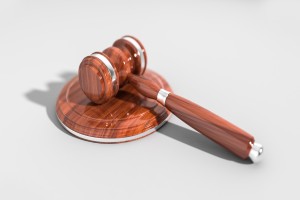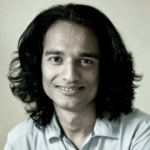
Mediation & Panchayat
 By Kaushal Kishore *
By Kaushal Kishore *
The best judge is one less known and seen in the media. Lord Alfred Denning had observed it in the previous century. Recently the Chief Justice of India NV Ramana quotes it in the virtual book launch ceremony. However, his own attitude towards media attention could be a different issue. He has proclaimed that people in India are confident to get relief and justice from judiciary. Moreover the Supreme Court, being the guardian of the largest democracy, stands with people whenever they need.
No one would have objected to his claims had the working class migrants, before leaving metropolitan cities, approached the judiciary with the same hope when the lockdown was imposed last year. The astonishing fact is that no judge took suo moto cognisance of the plight of millions of migrants who were compelled to travel long distance on foot to reach their villages.
In this era when the decision takes precedence over justice, Gandhi’s remark rings in the ears that the Law has become the luxury of the rich and the joy of the gambler. KR Narayanan, former President observed, while addressing the golden jubilee celebrations of the Supreme Court, “The law court is not a cathedral but a casino where so much depends on the throw of the dice.”
After a couple of decades, the condition of the judiciary still impalpably remains the same. In such a tragic situation, it appeared as if these hardworking migrants were thrown beyond the limits of India by the guardians of our legal system.
The massive paradigm shift in the Supreme Court during the tenure of last five Chief Justices is in public. In fact a leading Indian periodical, India Today, analysed the views of judges appearing outside the courtroom thirteen times in the last three months!
In this context, it is necessary to discuss what Justice Ramana seems to suggest in order to settle the disputations through mediation on occasions. He has initiated this suggestion in the India-Singapore Mediation Summit. It may be mentioned that the Supreme Court Mediation and Conciliation Project Committee has been functioning since 2005. Its initiative to train mediators is almost a decade old. While addressing the inauguration of the International Virtual Mediation Summer School (2021) by the end of July, Justice Ramana has criticised the myth created by British that dispute resolution and justice require the black coats and gowns and elaborate arguments. Practice of mediation was commonly followed in India before their arrival, he said and stressed to declare that the future belongs to mediation.
Also read: Indian Court and a social media giant!
Justice was a birth-right of every Indian before the advent of Mughal and British. Panchayat is known worldwide as an Indian system to deliver justice. The panel of five (Panch) virtuous people capable of fact finding used to ensure it together. A member nominated to the panel by each party, aware of the facts related to the dispute, can be noticed as a voluntary mediator. The session of Panchayat is presided over by its impartial wise leader in order to come to a wise and just conclusion unanimously. This tradition is referred to as Indian system of justice since it was evolved in this part of the globe. One can expose his or her political intentions while referring to this Indian tradition of mediation without a mention of Panchayat.
He has appropriately noticed the shortcomings of Indian judiciary that one of the parties dissatisfied with the outcome at the lower courts moves an appeal to the Supreme Court. The policy of making a decision instead of disposal of the justice is responsible for this multiplicity of proceedings at various levels. At the same time, this is one of the reasons behind delayed dispute resolution. The issues related to pending cases in the courts across the country is not out of the public view. He has referred to the realities that most of the litigants in India suffer from social and economic constraints. As such they need quick, inexpensive and convenient method of dispute resolution. What to say on this sympathetic attitude towards the have not? The “mango” man residing in a village or a city is trying hard to avoid the courts. Among these people, the traditional Panchayat is still surviving, however, keeping a fair distance from the media. So long most of the efforts to destroy this tradition has failed.
This tradition has been present in India since ahistorical times. The folk arts and literature are full of its descriptions. The experts from West mentioned about it due to its advantages that the Chief Justice has noticed to promote mediation. The Panchayat system lacks the possibility of money making that’s what institutionalisation of the legal system stands for. As such the legal practitioners need to oppose the traditional system to thrive. The law of nature and principles of natural justice are not aligned with this system. This is a fundamental difference between the legal institutions and traditional Panchayat. Khap Panchayats are condemned today for certain well known reasons. Constituent Assembly had included the Panchayat within the Directive Principles due to similar condemnation in its debates. The shade of banyan served the purpose of shelter for Panchayat as such they never demanded even for a building. As such they were noticed as Panch Parmeshwar (Supreme Lord). Annihilation of traditional system of quick, free and fair justice is out of question for Indian masses.
In the wake of the three-tier Panchayati Raj institutions, the traditional Panchayat seems to be shrinking. Its definition with the idea of block development at centre was coined during the Nehruvian era. In fact modern concept of democracy and the old tradition of Panchayat are at two opposite poles. The political philosophy of the two are available since the twentieth century. The study of ‘Hind Swaraj’ (Indian Home Rule) by Mahatma Gandhi and ‘A Grammar of Politics’ by Harold Laski are the testaments on different poles. All efforts dedicated to the Gandhian home rule led us towards the Socialist idea of self rule.
Justice Ramana quotes Gandhi while concluding the inaugural address. During the twenty years of the practise as a lawyer, he was occupied in bringing out private comprises of hundreds of cases, since he has realised that the true function of a lawyer was to unite the parties. This is what Bapu wrote in the autobiography about the trial of his client Dada Abdullah in South Africa. Mahatma’s approach towards the Truth is necessary for the proponents of Satyameva Jayate (Truth alone triumphs) and Yato Dharmastato Jayah (Where there is Dharma there is victory) to refer to the Panchayat.
*Kaushal Kishore is the author of The Holy Ganga (Rupa, 2008) and Managing Editor of Panchayat Sandesh, a monthly organ of All India Panchayat Parishad. The views expressed as personal





